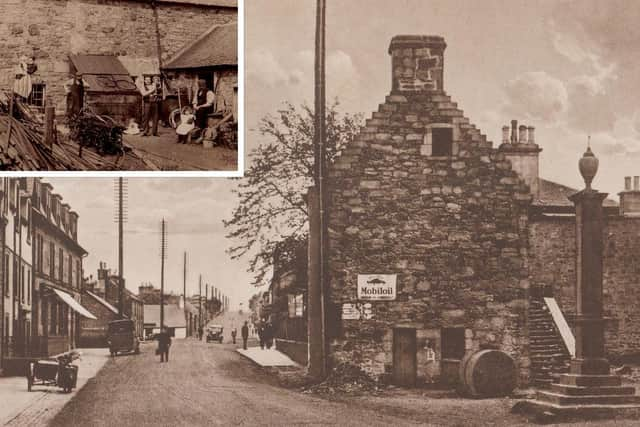Carnwath Tolbooth would have been Scotland's oldest
and live on Freeview channel 276
The difference between a Burgh of Barony and a Royal Burgh was that the profits from holding local markets went direct to the local laird and not the king.
The Royal Burghs were the first to be created with Lanark having the status of royal burgh in 1140 thanks to David I.
Advertisement
Hide AdAdvertisement
Hide AdThe idea of Burghs of Barony was dreamt up in the early 15 th Century and their creation helped to boost the Royal Coffers. Not only would the local lairds have to pay for permission to set up a burgh but they would have to pay a yearly fee.


In Carnwath’s case it was the Red Hose that had to be provided on an annual basis.
Carnwath was granted Burgh status in 1451 by King James II as he wanted to secure the support of the Sommerville family in his struggle against the Douglas family.
At that time the Black Douglases were the most powerful family in the whole of Scotland. The permission granted by James II included the right to set up a market cross and to hold a market on a Thursday.
Advertisement
Hide AdAdvertisement
Hide AdThe market cross may be the one that is now at Newbigging. It was quite likely that it was moved there in the 18 th Century as it is extremely unlikely that Newbigging had the right to set up a market cross let alone hold a market day.
The Tolbooth which survived to the 1930s probably dates back to the 15th century, judging from the stonework. However the crowstepped gables and the chimney are of a later period and the original building would have had a thatched roof rather than a slate one.
Much is known about what went on in the Tolbooth as the Court Book of the Barony of Carnwath still survives. It covers the dates 1523 to 1542, the period of the reign of James V, father of Mary Queen of Scots.
These papers were published in the 1930s by the Scottish Record Society. The Court dealt with a wide variety of cases varying from land disputes to theft of animals to boundary disputes.
Advertisement
Hide AdAdvertisement
Hide AdHowever, it did have some unusual powers including the reporting of all lepers and those that suffered from ‘the itch.’
The important local families formed the juries and the records tell us which farms they came from. This information is particularly useful for local historians when they are delving into the history of the Community. The Court would dispense justice from the upper floor of the Tolbooth.
Gradually things changed and the role of the Burgh courts disappeared, though the Tolbooth was still used as a local jail until the 19th century.
Eventually the Scottish Police Act saw the demise of the role of the Burgh of Barony by 1860.
Advertisement
Hide AdAdvertisement
Hide AdThe Tolbooth was eventually put to other uses and a smiddy operated on the site from the late 19th century; one aspect of this business was making bike wheels but eventually that business disappeared.
Then it was decided to demolish the Tolbooth in 1930. It is a pity this happened as it would have been the oldest surviving Tolbooth in Scotland had it survived.